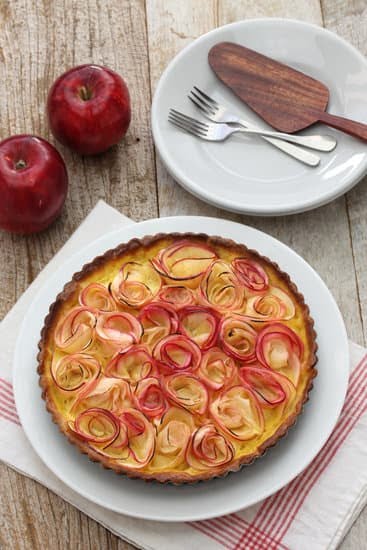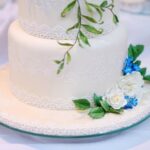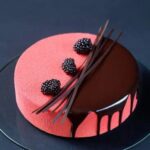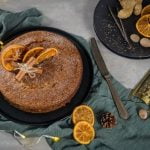Do you want to learn how to decorate a cake with whipped cream? Whipped cream is a popular and versatile option for cake decoration, known for its light and airy texture while still being able to hold a shape.
In this article, we will explore the process of using whipped cream to beautifully decorate cakes, from choosing the right tools and ingredients to mastering piping techniques and troubleshooting common issues. Whether you’re a beginner or an experienced baker, mastering the art of cake decoration with whipped cream is sure to elevate your baking skills.
Whipped cream has gained popularity as a go-to choice for cake decoration due to its lightness and ability to hold shape. From simple swirls and rosettes to intricate designs and patterns, whipped cream offers endless possibilities for decorating cakes. It’s an ideal option for those who prefer a lighter frosting without sacrificing on taste or aesthetics.
When it comes to decorating cakes with whipped cream, choosing the right tools and ingredients is crucial. From chilled utensils to fresh heavy cream, every detail matters in achieving the perfect whipped cream decoration. Throughout this article, we will discuss in detail the essential tools and ingredients needed for decorating a cake with whipped cream, ensuring that you have everything you need to get started on your decorating journey.
Choosing the Right Tools and Ingredients
When it comes to decorating a cake with whipped cream, the right tools and ingredients are essential for achieving the perfect result. One of the most important aspects of working with whipped cream is ensuring that your utensils and heavy cream are properly chilled. Using fresh heavy cream is also crucial, as it will affect the taste and texture of the whipped cream. Additionally, having the right tools on hand can make the cake decorating process much smoother.
To prepare whipped cream for cake decoration, you will need a few key ingredients and tools. First and foremost, you will need fresh heavy whipping cream. Look for high-quality heavy cream with a high fat content for the best results. In addition to this, you will need confectioners’ sugar to sweeten the whipped cream. Vanilla extract or other flavorings can also be added to enhance the taste of the whipped cream.
In terms of tools, having a chilled mixing bowl and beaters is essential for whipping the cream. The cold temperature helps stabilize the whipped cream as it is being prepared. A stand mixer or hand mixer can be used for this process, although some prefer to whip by hand for more control over the consistency.
It’s also beneficial to have various piping tips and pastry bags on hand for creating different designs with the whipped cream. By using these tools and ingredients, you’ll be well-equipped to decorate your cake with perfectly whipped cream in no time.
Whether you’re an experienced baker or just starting out, understanding how to choose the right tools and ingredients is crucial in creating beautifully decorated cakes with whipped cream. By using chilled utensils, fresh heavy cream, and essential tools like mixing bowls and piping bags, you’ll be well-prepared to create stunning designs on your cakes.
Next up, we’ll delve into step-by-step instructions on how to properly whip the cream to achieve desired consistency – an essential step in creating picture-perfect cake decorations using whipped cream.
Preparing the Whipped Cream
Achieving the perfect consistency for whipped cream is essential when using it as a cake decorating option. To ensure success, start by using chilled utensils and a fresh carton of heavy cream.
The colder the equipment and ingredients, the easier it will be to whip the cream to a light and airy texture that can hold its shape. Additionally, it is important to use heavy cream with a high fat content, as this will result in a stable whipped cream that is less likely to deflate.
To prepare the whipped cream, begin by pouring the cold heavy cream into a chilled mixing bowl. Using an electric mixer fitted with whisk attachments, start beating the cream on low speed and gradually increase to medium-high as it begins to thicken. Be mindful not to overbeat the cream, as this can result in it turning into butter. It should reach stiff peaks where it holds its shape when dolloped or piped.
For added flavor, consider incorporating vanilla extract or other flavorings into the whipped cream during the whipping process. Stabilizers such as powdered sugar or unflavored gelatin can also be added to help maintain the whipped texture of the cream and prevent deflation.
By following these steps and tips for preparing whipped cream, you can ensure that your cake decorations will have just the right texture and stability for an impressive finish.
Leveling and Frosting the Cake
Before you start decorating your cake with whipped cream, it’s essential to ensure that the cake itself is properly leveled and frosted. This step not only provides a smooth canvas for the whipped cream decoration but also ensures that the cake layers are even and stable.
Leveling the Cake
Using a long serrated knife or a cake leveler, carefully trim off any raised or uneven areas of the cake to create an even surface. It’s important to take your time with this step to ensure that the layers are leveled without creating too many crumbs.
Once your cake layers are leveled, place a small amount of whipped cream on your serving plate or cake board to prevent the cake from shifting during frosting.
Frosting With Whipped Cream
To frost the cake with whipped cream, start by placing a dollop of whipped cream in the center of the top layer of the cake. Use an offset spatula to gently spread the whipped cream towards the edges, creating an even layer across the entire surface. As you work, be mindful not to press too hard on the cake to avoid any crumbling or distortion.
Continue this process for each layer of the cake until all layers are assembled. Once all layers are stacked and frosted, use any remaining whipped cream to cover the sides of the cake, ensuring a smooth and even coating.
With these steps, you can achieve a perfectly leveled and frosted cake ready for beautiful whipped cream decorations.
Tips for Achieving a Smooth Finish
- Chill your cake after assembling it before frosting to help seal in moisture and create a firmer surface.
- Use a turntable when frosting your cake to easily rotate and access all angles while maintaining smoothness.
- If there are any imperfections in your frosting, use an offset spatula dipped in warm water to gently smooth out bumps or ridges.
Overall, taking care when leveling and frosting your cakes will help create a perfect base for decorating with whipped cream.
Piping Techniques and Tips
When it comes to cake decorating with whipped cream, learning different piping techniques can take your creations to the next level. Whether you’re looking to create intricate designs or add a touch of elegance to your cake, mastering various piping techniques is essential. Here’s how to decorate a cake with whipped cream using different piping methods and some useful tips for achieving professional-looking results.
One popular piping technique for decorating cakes with whipped cream is creating rosettes. To achieve this design, use a large closed star piping tip and pipe in a circular motion from the center of the cake outwards. This creates a beautiful floral pattern that instantly elevates the look of your cake. Another common technique is creating borders or edges using a round piping tip, which adds a polished finish to the overall design.
For those looking to add more flair to their cake decoration, swirls are an excellent option. With an open star piping tip, pipe small swirls onto the surface of the cake for a sophisticated and whimsical appearance. Additionally, experimenting with different piping tips can result in unique designs and textures on the cake’s surface, allowing for endless creative possibilities.
When it comes to choosing the right piping tips for different designs, consider factors such as the size of the cake and the desired decorative effect. Larger cakes may require larger piping tips to make an impact, while smaller cakes or cupcakes might benefit from finer details achieved using smaller tips.
| Piping Technique | Description |
|---|---|
| Rosettes | Use large closed star piping tip and pipe in circular motion |
| Borders/Edges | Create clean lines using round piping tip |
| Swirls | Add sophistication with small swirls using open star tip |
Adding Decorative Elements
Once you have successfully frosted your cake with whipped cream, it’s time to take your decoration to the next level by adding some decorative elements. One popular option is to incorporate fruits such as berries, kiwi slices, or pineapple chunks onto the whipped cream frosting. This not only adds a pop of color but also provides a refreshing contrast to the creamy texture of the whipped cream.
Another creative way to enhance your whipped cream cake decoration is by adding chocolate shavings or sprinkles. Chocolate shavings can be made using a vegetable peeler on a bar of chocolate, resulting in elegant curls that can be scattered on top of the cake. On the other hand, colorful sprinkles can provide a fun and playful touch to the overall look of the cake.
If you want to get even more creative, consider using piping techniques to create intricate designs and patterns directly on top of the whipped cream frosting. You can use different colored whipped creams in piping bags with various tips to pipe rosettes, borders, or swirls onto the cake. These designs will not only elevate the visual appeal but also showcase your skills in cake decorating with whipped cream.
| Decorative Element | Description |
|---|---|
| Fresh Fruits | Provides a pop of color and refreshing taste |
| Chocolate Shavings | Elegant curls that add sophisticated flair |
| Sprinkles | Fun and playful addition for a festive touch |
By incorporating these decorative elements into your whipped cream cake decoration, you can create visually stunning and delectable treats that will surely be a hit at any special occasion or celebration.
Keep reading for more information about how these new designs combine with basic frosting techinques:
- Explore New Designs Combining Fruit Shapes With The Whipped Cream
- The Effect Of Different Kinds Of Chocolate Shavings In Your Decoration Choices
Troubleshooting Common Issues
When it comes to decorating a cake with whipped cream, there can be some common issues that may arise during the process. It’s important to be prepared and know how to troubleshoot these issues in order to achieve the perfect whipped cream decoration on your cake.
Here are some common issues that may occur when decorating a cake with whipped cream:
1. Deflating: If your whipped cream starts to lose its volume and becomes flat, it may have been over-whipped. To fix this issue, you can gently fold in a small amount of fresh whipped cream to restore the texture and stability.
2. Melting: Whipped cream is delicate and can melt if exposed to heat or humidity. If you notice your whipped cream starting to melt while decorating the cake, place the cake in the refrigerator for a few minutes to firm up the whipped cream. Additionally, make sure to keep your utensils and ingredients chilled at all times when working with whipped cream.
3. Holding shape: Sometimes, whipped cream may not hold its shape well when piped onto the cake. To prevent this issue, make sure that your heavy cream is properly whipped to stiff peaks before using it for decoration. Adding stabilizers such as gelatin or cornstarch can also help maintain the shape of the whipped cream.
By being aware of these potential issues and knowing how to troubleshoot them effectively, you can ensure that your cake decorating with whipped cream goes smoothly and produces beautiful results. With a little practice and patience, you’ll master the art of using whipped cream as a versatile and delightful cake decoration option.
Storage and Serving Tips
When it comes to decorating a cake with whipped cream, not only is it important to have the right tools and techniques, but also to understand how to properly store and serve the finished product. Here are some essential tips for ensuring that your whipped cream decorations stay fresh and look their best.
Proper Storage
After you have decorated your cake with whipped cream, it’s crucial to store it in the refrigerator. Whipped cream is perishable and will start to deflate and lose its shape if left out at room temperature for too long. To prevent any melting or deflation of the whipped cream, place the cake in an airtight container or cover it with plastic wrap before storing it in the fridge.
Serving Suggestions
When serving a cake decorated with whipped cream, it’s best to let it sit at room temperature for about 15-20 minutes before serving. This allows the whipped cream to soften slightly, making it easier to cut through without disrupting the decoration on top of the cake. Additionally, be sure to use a sharp knife when cutting into the cake to ensure clean slices and well-preserved decorations.
Professional Presentation
For an extra professional touch, consider adding any final decorative elements just before serving the cake. Fresh fruit, chocolate shavings, or edible flowers can enhance the overall presentation of the cake while still maintaining its freshness. By following these storage and serving tips, you can ensure that your beautifully decorated cake with whipped cream stays fresh and stunning until it’s time to be enjoyed by everyone.
Conclusion
In conclusion, mastering the art of cake decoration with whipped cream is a delightful skill that can elevate any homemade dessert. The versatility of whipped cream as a decorating option offers endless possibilities for creating beautiful and delicious cakes.
From its light and airy texture to its ability to hold shape, whipped cream provides decorators with the perfect medium to let their creativity shine. By following the right tools, ingredients, and techniques, anyone can create stunning whipped cream decorations on their cakes.
When it comes to learning how to decorate a cake with whipped cream, it all starts with choosing the right tools and ingredients. Ensuring that utensils are chilled and heavy cream is fresh is crucial for achieving the perfect consistency when whipping the cream. Additionally, adding flavorings and stabilizers can enhance the overall taste and endurance of the whipped cream decoration. Mastering these initial steps sets a strong foundation for successfully decorating a cake with whipped cream.
Frequently Asked Questions
How Do You Decorate a Cake With Whipped Cream for Beginners?
Decorating a cake with whipped cream for beginners involves ensuring that the whipped cream is at the right thickness for piping and spreading. It’s important to start with a cooled cake to prevent the cream from melting.
Can Whipped Cream Be Used to Decorate Cake?
Whipped cream can absolutely be used to decorate a cake. It adds a light and airy texture to the cake, and can be easily flavored or colored to create beautiful designs. However, it’s important to keep in mind that whipped cream does not hold up as well as buttercream in warm temperatures.
Will Whipped Cream Melt on a Cake?
Whipped cream has a tendency to melt on a cake, especially if the cake is not kept refrigerated before serving. This is why it’s important to only decorate with whipped cream just before serving or keeping the cake refrigerated until ready to serve. Adding stabilizers like gelatin can also help prevent melting.

Welcome to our cake decorating blog! My name is Destiny Flores, and I am the proud owner of a cake decorating business named Cake Karma. Our mission is to provide delicious, beautiful cakes for all occasions. We specialize in creating custom cakes that are tailored specifically to each customer’s individual needs and tastes.





